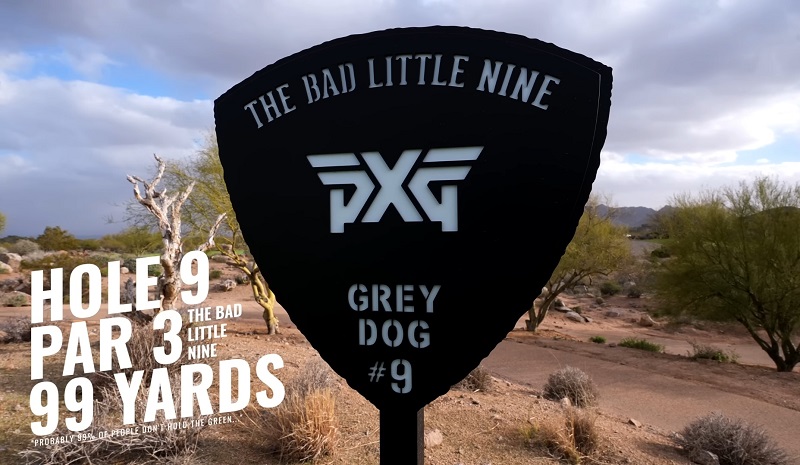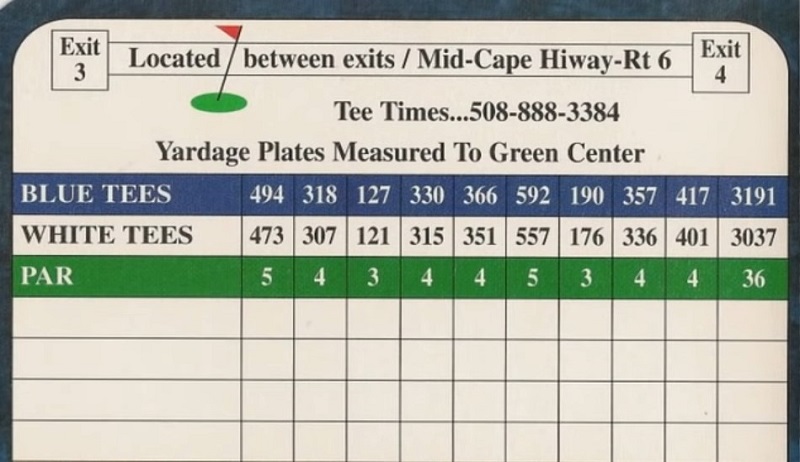Golf is a game of precision and finesse, where the goal is to get your ball into the hole in as few strokes as possible. To help measure performance, par has been established for each golf course.
In this article, we’ll explore what is par in golf, different types of pars, and how they work on the course also in match play and stroke play.
Maybe you are interested: What is an Eagle in Golf? Meaning & Definition
What Is Par In Golf?
Par in golf is the predetermined number of strokes an experienced golfer should take to complete a hole. It is typically used as a benchmark for measuring how well or poorly a golfer does during their round.
A higher par indicates more difficulty, while lower pars indicate easier play. It’s important to note that par is not based on how far a golfer hits their shots but rather the number of strokes it should take to complete the hole.
The Different Types Of Pars

Par can vary from hole to hole, depending on the difficulty of the shot. Typically, a golf course will contain various Par 3, Par 4, and Par 5 for players to tackle.
Par 3
A Par 3 is normally the shortest of all the holes on a golf course. This means that an experienced golfer should be able to complete the hole in three strokes. If a player completes the hole in three strokes, they have achieved a par 3, considered average for most holes on golf courses.
A par 3 hole is usually up to 225 yards, corresponding to how long it will take most players of different skill levels to hit their ball from the tee box onto the green.
Due to their length, par 3 holes generally only require golfers to use longer clubs during play. Par 3s is an ideal option for beginners as they are fairly easy and straightforward.
Par 4
Par 4s are the most common type of holes on a golf course. For experienced players, this means that it should take four or fewer strokes to complete the hole.
Par 4 holes are typically between 250 and 450 yards long, requiring longer clubs like wood or iron. With more experienced players, this is usually the most common score on a par 4.
Par 5
Par 5s are the longest holes on a golf course and usually require a combination of long-distance shots to get the ball closer to the green. For experienced golfers, this means that they should be able to complete the hole in five strokes.
Par 5s are usually between 450 and 600 yards long and require a driver, wood, iron, and wedge to complete. This can make them more challenging for novice players as they must use all the clubs in their bags.
How Does Par Work In Golf?
Par is a key element of the game of golf and helps to measure performance on each hole. If a player completes a hole in less than the specified par, they have scored under par. Conversely, they have gone over par if it takes them more than the predetermined number of strokes.
For example, if a Par 4 hole is 350 yards, and a golfer completes it in three strokes, they have scored a birdie (one-under par). Conversely, if the same golfer takes five shots to complete the hole, then they have gone one over par and scored a bogey.
Par Of The Course

The total par for a golf course is the sum of all the par on each hole, called the “course par.”
The most common par on a golf course is 72 for an 18-hole course, including 2 par-3, 9 par-4, and 6 par-5. The par for each hole is typically posted on a sign at the tee box.
Although most courses have a standard par of 72, some courses are easier or harder than others, so the total par can vary. For example, a course may be a par-71 if one of its holes is a par-3 instead of a par-4.
The difficulty of the golf course can also affect the individual hole pars. A course may have narrow fairways and fast greens, making it difficult for the golfer to hit their shots close to the hole. In this case, a hole normally a par-4 could become a par-5.
Par In Stroke Play And Match Play
Stroke play and match play are two contrasting golf formats. While the goal is the same – to get the ball in the hole – the strategies used to reach that goal can vastly differ.
In stroke play, each player attempts to score as low as possible on each hole, with any strokes made over par counting against one’s overall score.
Match play, on the other hand, sees players competing head-to-head and treating each hole separately from one other. Par plays its part in both formats, though it takes on a different meaning for each.
In stroke play, reaching par in any single hole is viewed as an admirable achievement. In match play, achieving par merely means you have won that specific hole without necessarily gaining any ground against your opponent(s).
Understanding the effects of par in both formats is key for serious golfers striving for success on any course.
Wrapping Up
Par is an important concept in golf; all serious players should know how it works. In stroke play, par indicates a “standard” score by which a golfer’s performance should be measured. In match play, par is used to decide who wins or loses individual holes.
Par can also affect the difficulty of a course, as holes may have different pars depending on their length or the presence of difficult hazards. Understanding how par works can help golfers make better decisions on the course and ultimately improve their scores.
Frequently Asked Questions
What Is Par In Golf For 9 Holes?
A par for 9 holes is typically around 36 strokes, depending on the course. This number can range from 33 to 39 strokes, depending on the difficulty and length of the course.
How Do I Count Par In Golf?
Par is the predetermined number of strokes an experienced golfer should take to complete a hole. It is used as a benchmark to measure performance. If a golfer completes the hole in less than par, they have scored under par, and if it takes them more than the predetermined number of strokes, then they have gone over par.
What Is 2 Under Par Called?
Two-under par is called an eagle, and it occurs when a golfer completes a hole in two strokes less than the standard (par).
Is Golf Par Always 72?
The par for any course can range from 70 to 74 strokes. Depending on the type of golf course and its difficulty, the par will be adjusted accordingly.
What Does Bogey Mean In Golf?
Bogey is used when a golfer goes one over par for a hole. For example, if a hole’s standard (par) is 4, and the golfer completes it in 5 shots, they have gone one over par and scored a bogey.
What Does A Double Bogey Mean In Golf?
A double bogey is when a golfer has gone two shots over the standard (par) for a hole. So if the par is 4, and the golfer completes it in 6 shots, then they have gone two over and scored a double bogey.



I amm no longer sure where you are getting your information, buut
good topic. I must spend a while studying much more or understaanding more.
Thanks for wonderful information I was looking for this information for my
mission.